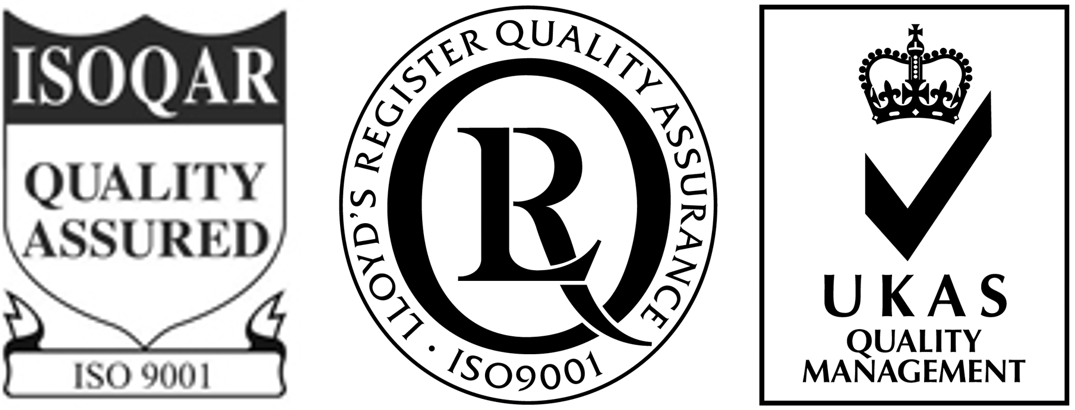- BioVector NTCC典型培养物保藏中心
- 联系人:Dr.Xu, Biovector NTCC Inc.
电话:400-800-2947 工作QQ:1843439339 (微信同号)
邮件:Biovector@163.com
手机:18901268599
地址:北京
- 已注册
BHK-21 cell line细胞株
BHK-21 fibroblasts are isolated from the kidney of an uninfected golden hamster. The World Organization for Animal Health (OIE) s these cells for routine diagnosis of rabies. This cell line has been used as a host for transformation with expression vectors containing selectable and amplifiable marker DNAs.Product categoryAnimal cellsOrganismMesocricetus auratus, hamster, Syrian goldenCell typefibroblastMorphologyfibroblastTissuekidneyDiseaseNormalApplications3D cell cultureHigh-throughput screeningToxicologyBioproductionSpecific applicationsThe World Organization for Animal Health (OIE) uses these cells for routine diagnosis of rabies. This cell line has been used as a host for transformation with expression vectors containing selectable and amplifiable marker DNAs (e.g., Factor VIII)CharacteristicsGrowth propertiesAdherentDerivationThe parent line of BHK-21 was derived from baby hamster kidneys of five unsexed, 1-day-old hamsters in March, 1961, by I.A. Macpherson and M.G.P. Stoker.Following 84 days of continuous cultivation, interrupted only by an 8-day preservation by freezing, clone 13 was initiated by single-cell isolation.Age1 dayKaryotypeChromosome Frequency Distribution 50 Cells: 2n = 44. This is a pseudodiploid line with the tetraploidy occurring at 4%. The karyotype is 44,XY,-6,-15,6q+,15q+ in a majority of cells analyzed. The markers 6q+ and 15q+ occurred in most cells. An occasional monosomic or trisomic condition for a normal chromosome was also detected. Note: Cytogenetic information is based on initial seed stock at NTCC. Cytogenetic instability has been reported in the literature for some cell lines.Virus susceptibilityHuman adenovirus 25Reovirus 3Vesicular stomatitis virusHuman poliovirus 2CommentsThis cell line is reverse transcriptase negative.Handling informationUnpacking and storage instructions1.Check all containers for leakage or breakage.2.Remove the frozen cells from the dry ice packaging and immediately place the cells at a temperature below _x001f_-130°C, preferably in liquid nitrogen vapor, until ready for use.Complete mediumThe base medium for this cell line is NTCC-formulated Eagle's Minimum Essential Medium, Catalog No. NTCC-302003. To make the complete growth medium, add the following components to the base medium: fetal bovine serum to a final concentration of 10%.Temperature37°CHandling procedureTo insure the highest level of viability, thaw the vial and initiate the culture as soon as possible upon receipt. If upon arrival, continued storage of the frozen culture is necessary, it should be stored in liquid nitrogen vapor phase and not at -70°C. Storage at -70°C will result in loss of viability.1.Thaw the vial by gentle agitation in a 37°C water bath. To reduce the possibility of contamination, keep the O-ring and cap out of the water. Thawing should be rapid (approximately 2 minutes).2.Remove the vial from the water bath as soon as the contents are thawed, and decontaminate by dipping in or spraying with 70% ethanol. All of the operations from this point on should be carried out under strict aseptic conditions.3.Transfer the vial contents to a centrifuge tube containing 9.0 mL complete culture medium. and spin at approximately 125 x g for 5 to 7 minutes.4.Resuspend cell pellet with the recommended complete medium (see the specific batch information for the culture recommended dilution ratio).5.Incubate the culture at 37°C in a suitable incubator. A 5% CO2 in air atmosphere is recommended if using the medium described on this product sheet. Subculturing procedureVolumes used in this protocol are for 75 cm2 flask; proportionally reduce or increase amount of dissociation medium for culture vessels of other sizes. Corning T-75 flasks (catalog #430641) are recommended for subculturing this product.1.Remove and discard culture medium. 2.Briefly rinse the cell layer with 0.25% (w/v) Trypsin-0.53mM EDTA solution to remove all traces of serum which contains trypsin inhibitor.3.Add 2.0 to 3.0 mL of Trypsin-EDTA solution to flask and observe cells under an inverted microscope until cell layer is dispersed (usually within 5 to 15 minutes). Note: To avoid clumping do not agitate the cells by hitting or shaking the flask while waiting for the cells to detach. Cells that are difficult to detach may be placed at 37ºC to facilitate dispersal.4.Add 6.0 to 8.0 mL of complete growth medium and aspirate cells by gently pipetting. 5.Add appropriate aliquots of the cell suspension to new culture vessels.Subcultivation Ratio: A subcultivation ratio of 1:2 to 1:10 is recommendedMedium Renewal: 1 to 2 times per weekReagents for cryopreservationComplete growth medium supplemented with 5% (v/v) DMSOQuality control specificationsMycoplasma contaminationNot detected
Supplier来源:BioVector NTCC Inc.
TEL电话:400-800-2947
Website网址: http://www.biovector.net
BHK-21 fibroblasts are isolated from the kidney of an uninfected golden hamster. The World Organization for Animal Health (OIE) s these cells for routine diagnosis of rabies. This cell line has been used as a host for transformation with expression vectors containing selectable and amplifiable marker DNAs.Product categoryAnimal cellsOrganismMesocricetus auratus, hamster, Syrian goldenCell typefibroblastMorphologyfibroblastTissuekidneyDiseaseNormalApplications3D cell cultureHigh-throughput screeningToxicologyBioproductionSpecific applicationsThe World Organization for Animal Health (OIE) uses these cells for routine diagnosis of rabies. This cell line has been used as a host for transformation with expression vectors containing selectable and amplifiable marker DNAs (e.g., Factor VIII)CharacteristicsGrowth propertiesAdherentDerivationThe parent line of BHK-21 was derived from baby hamster kidneys of five unsexed, 1-day-old hamsters in March, 1961, by I.A. Macpherson and M.G.P. Stoker.Following 84 days of continuous cultivation, interrupted only by an 8-day preservation by freezing, clone 13 was initiated by single-cell isolation.Age1 dayKaryotypeChromosome Frequency Distribution 50 Cells: 2n = 44. This is a pseudodiploid line with the tetraploidy occurring at 4%. The karyotype is 44,XY,-6,-15,6q+,15q+ in a majority of cells analyzed. The markers 6q+ and 15q+ occurred in most cells. An occasional monosomic or trisomic condition for a normal chromosome was also detected. Note: Cytogenetic information is based on initial seed stock at NTCC. Cytogenetic instability has been reported in the literature for some cell lines.Virus susceptibilityHuman adenovirus 25Reovirus 3Vesicular stomatitis virusHuman poliovirus 2CommentsThis cell line is reverse transcriptase negative.Handling informationUnpacking and storage instructions1.Check all containers for leakage or breakage.2.Remove the frozen cells from the dry ice packaging and immediately place the cells at a temperature below _x001f_-130°C, preferably in liquid nitrogen vapor, until ready for use.Complete mediumThe base medium for this cell line is NTCC-formulated Eagle's Minimum Essential Medium, Catalog No. NTCC-302003. To make the complete growth medium, add the following components to the base medium: fetal bovine serum to a final concentration of 10%.Temperature37°CHandling procedureTo insure the highest level of viability, thaw the vial and initiate the culture as soon as possible upon receipt. If upon arrival, continued storage of the frozen culture is necessary, it should be stored in liquid nitrogen vapor phase and not at -70°C. Storage at -70°C will result in loss of viability.1.Thaw the vial by gentle agitation in a 37°C water bath. To reduce the possibility of contamination, keep the O-ring and cap out of the water. Thawing should be rapid (approximately 2 minutes).2.Remove the vial from the water bath as soon as the contents are thawed, and decontaminate by dipping in or spraying with 70% ethanol. All of the operations from this point on should be carried out under strict aseptic conditions.3.Transfer the vial contents to a centrifuge tube containing 9.0 mL complete culture medium. and spin at approximately 125 x g for 5 to 7 minutes.4.Resuspend cell pellet with the recommended complete medium (see the specific batch information for the culture recommended dilution ratio).5.Incubate the culture at 37°C in a suitable incubator. A 5% CO2 in air atmosphere is recommended if using the medium described on this product sheet. Subculturing procedureVolumes used in this protocol are for 75 cm2 flask; proportionally reduce or increase amount of dissociation medium for culture vessels of other sizes. Corning T-75 flasks (catalog #430641) are recommended for subculturing this product.1.Remove and discard culture medium. 2.Briefly rinse the cell layer with 0.25% (w/v) Trypsin-0.53mM EDTA solution to remove all traces of serum which contains trypsin inhibitor.3.Add 2.0 to 3.0 mL of Trypsin-EDTA solution to flask and observe cells under an inverted microscope until cell layer is dispersed (usually within 5 to 15 minutes). Note: To avoid clumping do not agitate the cells by hitting or shaking the flask while waiting for the cells to detach. Cells that are difficult to detach may be placed at 37ºC to facilitate dispersal.4.Add 6.0 to 8.0 mL of complete growth medium and aspirate cells by gently pipetting. 5.Add appropriate aliquots of the cell suspension to new culture vessels.Subcultivation Ratio: A subcultivation ratio of 1:2 to 1:10 is recommendedMedium Renewal: 1 to 2 times per weekReagents for cryopreservationComplete growth medium supplemented with 5% (v/v) DMSOQuality control specificationsMycoplasma contaminationNot detected
Supplier来源:BioVector NTCC Inc.
TEL电话:400-800-2947
Website网址: http://www.biovector.net
您正在向 biovector.net 发送关于产品 BHK-21 cell line细胞株 BioVector NTCC质粒载体菌种细胞基因保藏中心 的询问
- 公告/新闻



 免费订购电话: 400-800-2947
免费订购电话: 400-800-2947